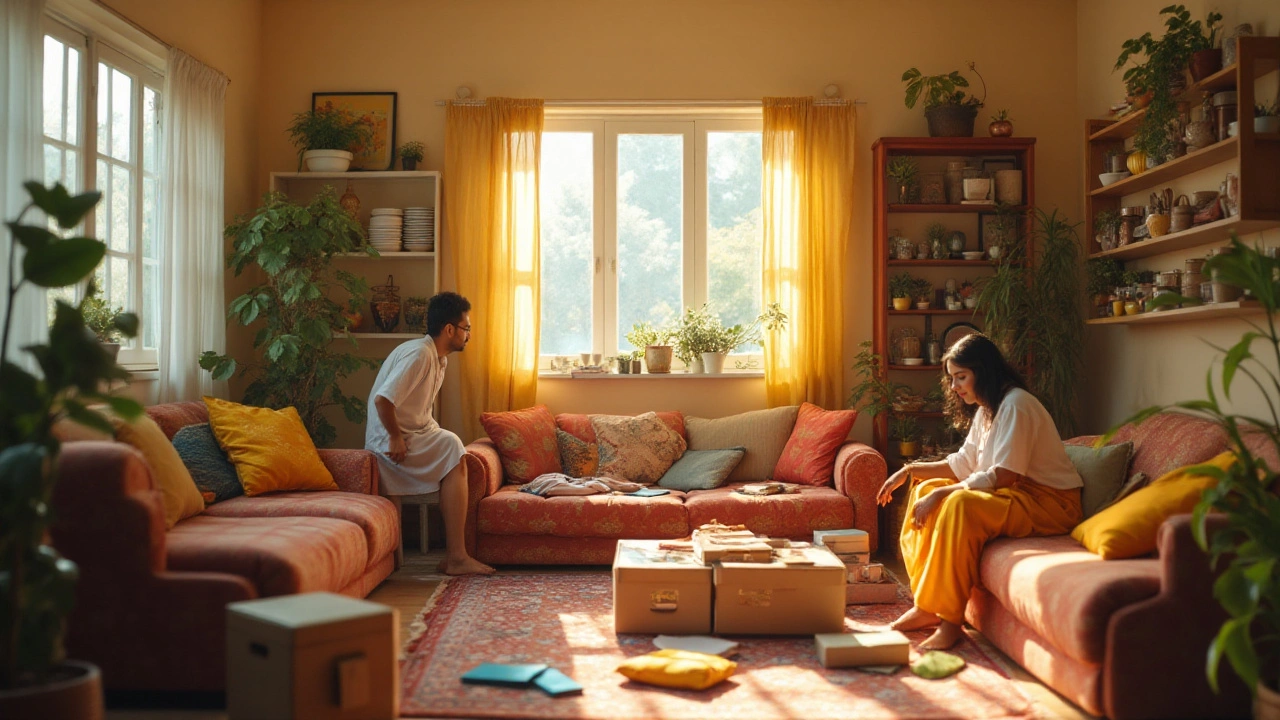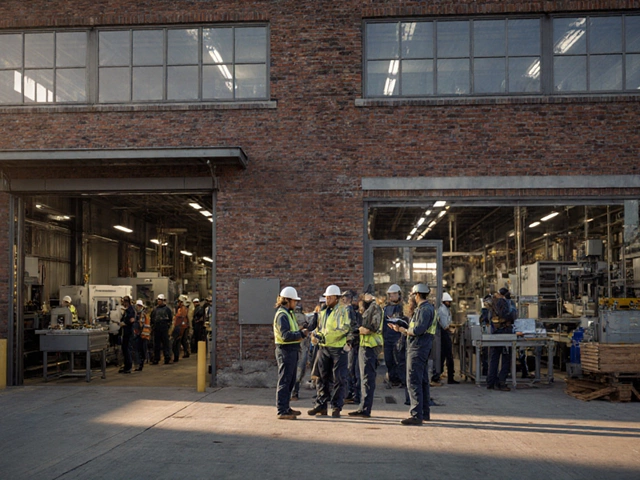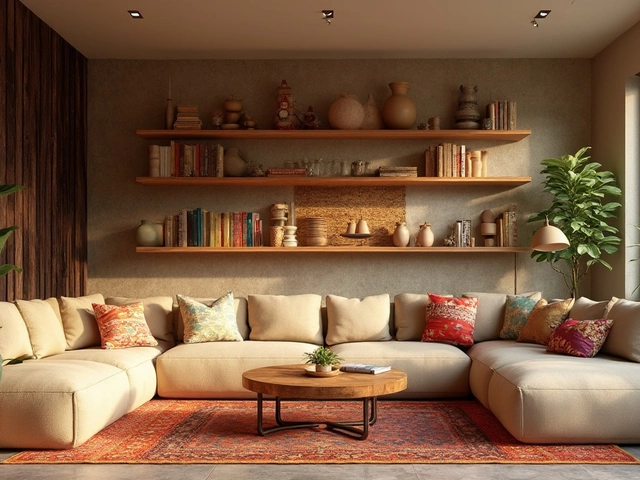
Is your home feeling a little too cramped lately? There's nothing quite like the sight of clutter to weigh you down. Believe it or not, you can transform your space in just one day with the right approach and mindset.
Before you start, it's important to set your intention for the day. Picture the end result: a home that feels open, stress-free, and functional. This goal will keep you motivated as you roll up your sleeves and begin the process of decluttering.
Decluttering doesn't mean getting rid of everything you own. It's about making room for the things that truly matter and finding efficient ways to store the rest. Armed with a solid plan, you'll learn how to decide what stays and what goes, how to best use your storage spaces, and how to keep it all organized so that the clutter doesn't creep back.
- Preparing for a Successful Declutter Day
- Sorting and Categorizing Your Belongings
- Maximizing Your Storage Space
- Implementing Organizational Solutions
- Maintaining a Clutter-Free Environment
Preparing for a Successful Declutter Day
To embark on a mission of decluttering your home and achieving home organization, the first step is meticulous preparation. Waking up on the day fully charged with a plan can determine the success of this initiative. Make sure you have a clear schedule, as dedicating a full day means minimizing other commitments. This could be a weekend when distractions are limited, allowing you to focus all your energy and creativity on transforming your space.
Begin by collecting materials that will aid in the declutter process. Gather boxes, bags, and bins for sorting your items into categories such as keep, discard, donate, or sell. Having the right organizational tools on hand will help maintain a structure amidst what could otherwise be chaotic. Consider labeling these boxes to streamline the process even more. Markers, sticky notes, or masking tape can help, ensuring items are stored correctly and easily found later.
In preparing, set the mood to encourage a positive mindset. This could involve playing your favorite upbeat music, which many experts suggest can boost productivity and energy levels. Background music has been shown to reduce stress, so put on a playlist that keeps you motivated throughout the day. Alternatively, a powerful podcast or motivational audiobooks might offer the inspiration needed. Marie Kondo, author of 'The Life-Changing Magic of Tidying Up,' often reminds us in her simplest advice: "The objective of cleaning is not just to clean, but to feel happiness living within that environment."
This simple yet profound statement reinforces the importance of maintaining joy while organizing one's cluttered life.
An extra tip involves envisioning what you'd like to achieve by the end of your declutter day. Visualizing a specific goal—a clean, organized home with only the most loved and essential items—helps in guiding your decision-making process throughout the day. It’s useful to walk through each room before starting to note down potential problem areas or particular concerns that need addressing. With these mental notes, prepare a realistic timeline that estimates how much time to devote to each area, adjusting according to the amount of clutter.
If time permits, engage another person, like a friend or family member, who can offer a fresh perspective and moral support. Often, a second opinion can prevent you from holding onto items no longer serving you. But remember, with the help can come distractions, so ensure this person understands the goals clearly. By laying this groundwork, you set yourself up for an organized, efficient, and energizing declutter day, leaving a clear path to a clutter-free and harmonious home.
Sorting and Categorizing Your Belongings
When embarking on the mission to declutter your home, one of the most essential steps is to sort and categorize everything you own. This might seem daunting at first, but the key is to break it down and approach it systematically, starting with one room at a time. Begin by selecting an area that you feel could use the most transformation. There’s an old Japanese saying, 'A cluttered room is a cluttered mind,' and this couldn’t be more true when you’re trying to tackle mountains of unnecessary items. The moment you start organizing, you'll see a marked improvement in both the physical and mental environment immediately surrounding you.
Start by setting up four distinct piles or boxes for your belongings: Keep, Donate, Sell, and Trash. This categorization will help guide your decisions and ensure everything in your space has a place. For the keep pile, focus on items that you've used recently and that hold significant sentimental value—these are the treasures of your home that bring joy to your daily life. The donate pile should include items that are still in good condition but haven't been used for at least six months. You’re likely to have a fair number of clothes or kitchen gadgets sitting around that you might have forgotten about. The sell pile should contain things that have value but are no longer of use to you; think old gadgets, furniture, or collector's items. Finally, the trash pile should include broken or unusable items that you’ve been holding on to with no foreseeable need or repair in sight.
Deciding What Stays and What Goes
This part of the process calls for honest introspection and sometimes, a bit of tough love. Hold each item in question and ask yourself two key questions: ‘Have I used this in the past year?’ and ‘Does this item bring me happiness or utility?’ If the answer is 'no,' then it's probably time to let go. According to Marie Kondo, a tidying expert and best-selling author, if an object doesn’t spark joy when you hold it, it’s time to thank it for its service and part ways. Implementing such a philosophy can ease decision-making and make the experience more rewarding. It’s also helpful to visualize keeping only those things that actively enhance your life. A report showed that people can spend as much as 1,153 hours over their lifetime searching for misplaced items. Imagine reclaiming even a fraction of that time by simply ensuring everything you keep has a designated spot.
The Final Steps
Once you’ve sorted through your possessions, take the time to label each box or pile clearly, and deal with the piles right away. Schedule a day to donate items to local charities or arrange for a pickup to keep the momentum going. For items that you choose to sell, there are numerous platforms like eBay, Craigslist, or even Facebook Marketplace that can quickly help you turn clutter into cash. Set yourself a reasonable deadline to deal with your trash pile by either arranging for a pickup service or heading to the nearest waste facility. By categorizing items effectively and dealing with them promptly, you reinforce the importance of maintaining a clutter-free environment, making it easier to enjoy your newly organized home.

Maximizing Your Storage Space
When it comes to creating a home that feels spacious and organized, making the most of your available storage is essential. To start, you'll want to evaluate the storage solutions you currently have. It's entirely possible that you're not utilizing them to their full potential. Often, there's wasted vertical space in closets or underused corners that can be significantly optimized. Shelves and hooks are your allies here. Imagine how a simple set of floating shelves or over-the-door organizers can turn an empty space into a functional area for storing essential items. This approach not only helps in organizing, but it also makes them easily accessible. Let's face it, if storage isn't convenient it ends up collecting dust instead of serving its true purpose.
Think about incorporating multipurpose furniture that offers hidden storage options. Pieces like ottomans, benches, or coffee tables with storage compartments can keep your home organization discreet and stylish. According to a survey by Furniture Today, nearly 30% of homeowners express the need for better storage options as a top priority when considering home improvement ideas. Use this insight to guide your choices when updating or purchasing furniture. It's not just about stashing away items you seldom need. It's about intelligently integrating storage solutions into your daily life, so it all feels and looks natural, reducing clutter visually and physically.
Consider the power of labeling not just for aesthetic reasons, but for practicality too. Labeling boxes, bins, and baskets can save heaps of time, especially when you're in search of something specific. Visual reminders encourage everyone at home to return things to their rightful spots, maintaining the clean house feel with minimal effort. Plus, labels don't have to stand out like a sore thumb; there are countless stylish options that blend seamlessly with any decor, making them just as much a part of the design as any decorative item.
Another hidden gem in storage solutions is the space beneath staircases. Often overlooked, it can be transformed into a mini-mudroom, bookshelves, or even a clever drawer system for shoes or linens. If you're not making use of this area yet, think about how it could alleviate storage pressure elsewhere in your home. Famous architect Frank Lloyd Wright once said, "Space is the breath of art," reminding us that smart use of space is an elegant solution to organizational snags.
Finally, staying organized is easier when you introduce a rotating system for seasonal clothing and items. Store off-season items in vacuum-sealed bags or clear containers labeled accordingly. This practice not only saves space but makes it easier to access what you need each season without creating chaos. When evaluating storage needs, remember that simplicity often goes a long way towards creating a serene, functional living space.
"Simplicity is the ultimate sophistication." - Leonardo da Vinci
Implementing Organizational Solutions
After sorting through your belongings and identifying what needs to stay, it's time to think about how to keep things organized. A clutter-free home is not just about the absence of excess items, but also about having effective storage solutions in place to maintain order. Start by taking a fresh look at your current layout and assess where improvements can be made. Are there spaces in your home that could be better utilized? Often, we overlook the potential of vertical space, which can be efficiently used with the addition of shelving and hooks. This approach not only provides more storage but also contributes to the aesthetic appeal of your living space. In fact, according to a 2022 study by Better Homes & Gardens, vertical storage solutions can increase room functionality by up to 40%.
Next, consider the use of modular furniture, which has become increasingly popular for its adaptability and efficiency in handling home organization challenges. These pieces can often serve dual purposes, like a bench with built-in storage or a coffee table that doubles as a cabinet. When choosing furniture, think about its potential contribution to both function and style. Keeping a harmonious balance ensures your space remains both practical and welcoming. While investing in such furniture may require an upfront cost, the long-term benefits of reduced clutter and enhanced utility can make it worthwhile.
In implementing these organizational strategies, labeling becomes crucial. It's a simple yet powerful tool that can save time and reduce the frustration of searching for things. Use labels on boxes, jars, and baskets to clearly mark their contents. It might seem like an elementary task, but it significantly aids in maintaining an organized space. Incorporating color-coded labels can also add an element of fun and ease to the sorting process. "Labeling is not just about knowing where things are; it's about creating a system that simplifies everyday life," notes Marie Kondo, renowned organizing consultant and author.
Additionally, having a dedicated zone for each category of items is another effective tactic. Allocate specific drawers, shelves, or cabinets for similar kinds of stuff. Whether it's kitchen supplies, clothing, or office materials, having a designated area ensures everything has its place. This method not only improves efficiency but also tends to prevent future messes. For instance, a 2023 survey by the National Association of Professional Organizers found that households with designated storage zones were 60% more likely to maintain a tidy environment over time.
To round off your plan, think about integrating smart organizational systems. In recent years, technology has brought about a range of solutions aimed at enhancing home declutter efforts. From apps that remind you when it's time to reorganize to digital inventories that track what you own, these tools can be a game-changer. Engaging with technology not only makes the organizing process smoother but often enhances one’s commitment to maintaining a clean, clutter-free home. The right mix of traditional and contemporary solutions tailored to your personal style can set you up for lasting success in creating a serene, clutter-free environment.

Maintaining a Clutter-Free Environment
Once you've invested the time and energy to declutter your home in a single day, the key to preserving this newfound bliss lies in habit-building. Creating habits that support a neat space starts with daily routines. A good practice is to dedicate a few minutes each night to tidying up. Consider involving the whole household in a five-minute tidy-up before bedtime; it's an excellent way to keep all areas under control as everyone takes part. Pair these habits with a dedicated place for every item, ensuring that once-used items have a home to return to.
Long-term maintenance involves setting rules for new acquisitions. When new items enter your home, aim to practice the one-in, one-out policy. For every new item, let go of an old one. This encourages you to assess what you truly need and prevents the pile-up of unnecessary things. This principle can be particularly effective with clothing. Having a capsule wardrobe—where every item serves multiple purposes—is a compelling way to both declutter and stay stylish without the excess.
Regular Assessments and Adjustments
Periodically assessing your space helps you stay on track. Consider setting a monthly check-in where you evaluate areas prone to clutter, such as closets or kitchen drawers. Are there things collecting dust? Are organizational systems still working? Adjust as needed. Remember, what worked last month might need tweaking today. A rolling evaluation ensures none of your spaces become neglected.
Technology can be a surprising ally in maintaining a clutter-free home. Subscribing to digital magazines or e-books, for instance, can keep your physical space clear of bulky paper products. Similarly, digital storage solutions for documents or photos free up significant space that might otherwise be dominated by filing cabinets or photo albums. A 2022 study by Statista indicated that the average household owns around 300,000 items, making digital solutions even more appealing for managing vast quantities of information.
"The magic thing about tidying is that when you tidy your space, you tidy your mind," says Marie Kondo, a renowned tidying expert. Her words echo the philosophy that cleanliness and mental clarity go hand in hand, providing an extra incentive to maintain our spaces.
Mindful Buying Decisions
One of the strongest allies in maintaining a decluttered space is mindfulness during the purchasing process. Before buying something new, ask yourself if it's going to add value to your life or just end up as clutter. It's beneficial to practice mindful shopping by making lists and sticking to them, avoiding impulse buys that tend to cause clutter over time. Being selective will help keep your home aligned with your new organized lifestyle.
Ultimately, sustaining a clutter-free environment is about balance, consistency, and a willingness to adapt. It's not a one-size-fits-all approach, but a dynamic process tailored to your lifestyle and needs. Every effort you make to keep your home tidy contributes to a more serene and functional living space, proving that maintaining order is both an art and a continuous journey.




